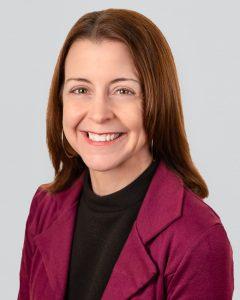IDEAS
Instructional leadership at the forefront
By Suzanne Bouffard
Categories: Career pathways, Change management, Continuous improvement, Implementation, Leadership, Learning systems/planning, School leadership, System leadershipOctober 2019
Vol. 40, No. 5
Des Moines (Iowa) Public Schools is one of six urban districts participating in an effort to redesign the role of principal supervisors. The Wallace Foundation’s Principal Supervisor Initiative provides four years of support for these districts to transform the role, which has traditionally focused on operations and compliance, into one that supports principals to be instructional leaders.
Des Moines’ experience illustrates how the initiative is changing leadership structures and roles, as indicated in an implementation report of the initiative (Goldring et al., 2018). It also shows how professional learning at all leadership levels is essential for improvement.
Learn how @WallaceFdn’s Principal Supervisor Initiative has changed @DMschools leadership structures and roles in this #LearnFwdTLP Q&A. Share on XDes Moines associate superintendent Matt Smith, principal supervisor Barry Jones, and project manager Ruth Wright shared their experiences with The Learning Professional.
Q: Why are you focusing on the role of principal supervisors?
Matt Smith: It started with superintendent Thomas Ahart’s vision to create an Office of School Structure to serve our leaders with development and support. Before this work began, our leaders had been focusing on alignment with the state standards, but we weren’t grounding that in instructional leadership. We recognized the need to make a shift in roles and support to really emphasize instructional leadership.
We wanted to start with central office, because those of us in district leadership had been principals ourselves and had been the recipients of a lot of things that central office had pushed down to schools without real understanding or support. If we built the instructional focus among supervisors, they would be ready to provide support, and we could roll it out to school leaders and then teachers.
After vetting several instructional models and frameworks, we decided to use the Marzano Instructional Framework. We also decided to work with Learning Sciences International, which uses aligned, hierarchical structures for tracking and aligning practices across levels, so that we could create consistency around the instructional framework. I remember being a principal, and when we did instructional rounds, our coaching was left up to what each of us thought it should be. The instructional framework is important for changing that and creating consistency.
Q: What shifts are principal supervisors and principals making?
Barry Jones: The instructional framework has been a game changer. Before, principals and principal supervisors had been acting as first responders, putting out fires all the time. Our umbrella of responsibilities was so big. When we started the Principal Supervisor Initiative, we focused really hard on working smarter and shifting from a mentality of management to one of instructional leadership.
Smith: This meant changing the role of principal supervisors to one focused on observing and coaching principals around the competencies of the framework. We had to make that role abundantly clear to principals. We told them that they couldn’t call the principal supervisor anymore about things like a pipe bursting, and we explained that would detract from the supervisor helping them with their instructional leadership practices. And we coached the supervisors about how to handle those kinds of requests and help shift principals’ mindsets.
Q: How are principal supervisors focusing more on instruction?
Smith: We created structures at central office to prepare and provide ongoing support to the principal supervisors so they can go deep into the instructional framework. About 30% of their time is spent engaging in professional learning about instructional leadership, in leadership PLCs, and in collaborative meetings with other principal supervisors and district teams. For example, they meet weekly or biweekly with the district’s teaching and learning curriculum teams so that everyone is calibrated on the standards and competencies and in tune about what to look for in schools and classrooms. The rest of the principal supervisors’ time is spent in schools, observing and coaching principals. We follow best practice guidelines for the number of principals for every supervisor. We initially started with 10 to 1, and that ratio has fluctuated up and down slightly over time.
Ruth Wright: Another big shift is that we offer aligned professional learning for principals. We did not offer them instructional leadership professional learning before. We had management meetings, but not content development and learning. Now, principals and supervisors engage in a series of four 45-day professional learning cycles. Each starts with training on an aspect of the instructional framework, and then the supervisors do observation and coaching of the principals with follow-up every two weeks.
Smith: So when a principal and principal supervisor walk into a classroom, they can assess whether instruction and learning are happening at the right cognitive level, have deep conversations about whether the students are doing work that is aligned to the framework, and talk about pedagogical strategies like whether the teacher grouped kids well to achieve the task.
Q: How does this translate to teachers and students?
Wright: Everyone across the district is aligning their work with the instructional framework. After central office and principals, we rolled this out to instructional coaches and teachers. With the foundation of the framework and use of a common language in place, we committed to going further and deepening the learning with Learning Sciences International ’s Schools for Rigor approach to school transformation to help us align practices across levels. (See “Empowered students lead and learn”).
Smith: With the instructional framework, learning targets are a rallying point for curriculum. Teachers post them on their boards, so the principals and principal supervisors can assess what students are doing and whether it is aligned to the learning target. Everyone is on the same page.
To build their knowledge, teachers participate in PLCs in addition to the observation and feedback from principals and coaches. The work of the principal supervisors has been critical in getting school leaders to understand deeply what a highly effective PLC looks like. In addition to spending a lot of time in classrooms with principals, the supervisors spend many hours in principal PLCs, and they guide principals to see how they are modeling what effective teacher PLCs should look like.
Q: What changes are you seeing in leaders’ and teachers’ practices?
Jones: When we started this work, the majority of all classroom instruction was teacher-centered, and students were practicing at retrieval-level tasks. The growth that’s been made has been in tasks that are more rigorous. Now students are doing most of the thinking and talking, instead of teachers.
Smith: To assess the level of effectiveness of the principal supervisors, we are looking at student achievement data by network. There is a lot of context to each building’s data. For example, in several of his schools, Barry is focused on closing the gap for African American males because that is a need in those buildings. But in another one of his buildings, the school is undergoing complete turnaround, so we are looking for accelerated growth for all students. We also do 360 evaluation, during which principals give detailed feedback about their supervisors.
Wright: They take this feedback seriously and are thoughtful about it, because they know it will impact how their supervisors support them in the future. But we see that most of the principals feel very positively about the supervisors and the process. Some of them say, “I hope my teachers feel about me the way I feel about my principal supervisor.” Principals tend to feel very isolated, but now with a principal supervisor who has been in the game and is responsible for the principals’ success, they feel they can be vulnerable so they can learn and grow.
Q: What are your plans for the future? How will you make this work sustainable?
Smith: The work of and support for principal supervisors has to be built into district infrastructure. Too often, when districts use grant funds to create new positions, they end up with a warm body but no capacity to change anything. And they often have to cut the positions when the grant funding ends.
Instead, from the beginning of the initiative, our superintendent has invested general funds in the principal supervisor positions and used grant support to build knowledge and capacity through contracts with experts on instruction and leadership. That has allowed us to build knowledge that can be shared throughout the district. When we expanded this work from an initial pilot of six schools to 22 schools, principal supervisors led the implementation, with gradual release of responsibility from our partners at Learning Sciences International.
We are also aligning this work with a leadership pipeline. We are investing in our associate principals, and we know we need to go down a level to potential teacher leaders. The traditional pipeline work we used to do (identifying high-flying associate principals and meeting with them three hours a week for 12 weeks to discuss leadership principles) didn’t quite capture the disposition and mindset we needed to create among principals. Now we are more focused on instructional leadership and what that really looks like.
Professional learning at all leadership levels is ESSENTIAL for improvement. Learn why in this #LearnFwdTLP article: Share on XAbout the initiative
The Principal Supervisor Initiative includes five core components:
- Revise the principal supervisors’ job description to focus on instructional leadership;
- Reduce principal supervisors’ span of control (the number of principals they oversee), and change how supervisors are assigned to principals;
- Train supervisors and develop their capacity to support principals;
- Develop systems to identify and train new supervisors (succession planning); and
- Strengthen central office structures to support and sustain changes in the principal supervisor’s role.
“Principals tend to feel very isolated, but now with a principal supervisor who has been in the game and is responsible for the principals’ success, they feel they can be vulnerable so they can learn and grow.”
— Ruth Wright
References
Goldring, E.B., Grissom, J.A., Rubin, M., Rogers, L.K., Neel, M., & Clark, M.A. (2018). A new role emerges for principal supervisors: Evidence from six districts in the Principal Supervisor Initiative. New York, NY: The Wallace Foundation.

Suzanne Bouffard is senior vice president of communications and publications at Learning Forward. She is the editor of The Learning Professional, Learning Forward’s flagship publication. She also contributes to the Learning Forward blog and webinars. With a background in child development, she has a passion for making research and best practices accessible to educators, policymakers, and families. She has written for many national publications including The New York Times and the Atlantic, and previously worked as a writer and researcher at the Harvard Graduate School of Education. She has a Ph.D. in developmental psychology from Duke University and a B.A. from Wesleyan University. She loves working with authors to help them develop their ideas and voices for publication.
Categories: Career pathways, Change management, Continuous improvement, Implementation, Leadership, Learning systems/planning, School leadership, System leadership
Recent Issues
LEARNING DESIGNS
February 2025
How we learn influences what we learn. This issue shares essential...
BUILDING BRIDGES
December 2024
Students benefit when educators bridge the continuum of professional...
CURRICULUM-BASED PROFESSIONAL LEARNING
October 2024
High-quality curriculum requires skilled educators to put it into...
LEARNING TO PIVOT
August 2024
Sometimes new information and situations call for major change. This issue...












